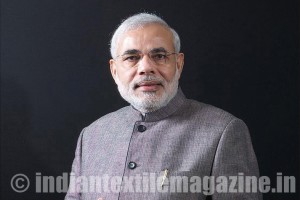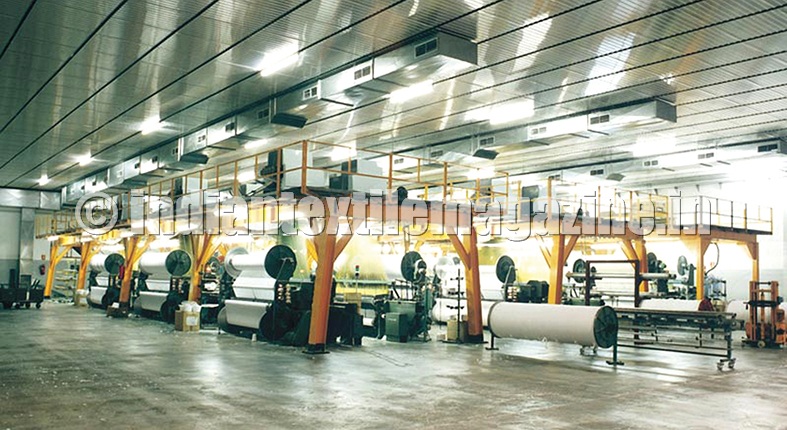3 years of leadership, transformation and progress
The Narendra Modi-led BJP Government which completes three years in office this month has shown that it is a government with a sense of purpose and is clear and confident about the way it wants to navigate the economy and not afraid to take bold decisions.
The year 2014 will be forever etched in the memory of every Indian. After about 30 years, the country’s populace had elected a government with a thumping majority. It was a positive vote for change. Citizens of the country wanted the country to come out of a mood of cynicism and despair. They were looking for dynamic and bold leadership, which would propel India to the top echelons in the pecking order of world’s leading economies.
The Narendra Modi-led Government has through its sense of purpose and firm decisiveness brought about a remarkable turnaround in the mood of the nation. Thanks to a slew of policy initiatives, India today is being talked about as being perhaps the only bright spot in the global economy.
Even the worst critics of the Government would agree that there has been an undeniable resurgence in the fundamentals of the Indian economy under the present government. The GDP is a good case in point. Not only did it overtake the rate of China during the first year of the government, it has since then been relatively stable. The stock markets have been hitting new records. Interest rates have been falling. The rupee has been relatively stable. Inflation has been controlled to a large extent. Things are under control on the fiscal deficit front, while Foreign Direct Investment (FDI) is at an all-time high.
The improvement in all the above-mentioned parameters have been possible because of key policy initiatives of the Government. Right from the ‘Make in India’ campaign to the ‘Swachh Bharat’ mission to the announcement of the ‘Smart Cities’ plan to the truly ‘big bang’ demonetization drive, and the much-anticipated roll-out of the GST Bill, the Government has demonstrated that it means business.
Let us take a closer look at some of the these key policy initiatives that are driving forward the economy, apart from taking a detailed look at a few that are all set to propel the textile industry to newer heights.
Make in India
One of the avowed missions of the Government right from the time it took over was to make India a global manufacturing hub. It wanted to complement India’s emergence as a key hub for the service industry. It identified 25 sectors that needed to be focused upon under the plan. Accordingly, the FDI policy was also liberalized.

One of the oft-repeated criticisms against India by potential investors was about the red-tape and bureaucratic hassles the country had become infamous for over a period of time.
The present government has through the ‘Make in India’ initiative ensured that the ease of doing business in the country is eased in the true sense of the term. While the inactive may not have brought in dramatic changes in the manufacturing scenario, what it has done is to set in place a clear-cut roadmap for the sector’s growth. Given the healthy financial parameters of the economy and continued impetus being provided by the government to manufacturing, it is one initiative which could emerge as the game changer for the economy.
Swachh Bharat
For long it has been felt that for a country that aspires to become a global economic super power, cleanliness was not being attached the kind of importance it deserved in India. This is where the announcement of the ‘Swachh Bharat Abhiyan’ assumes importance.
The campaign by the government to clean streets, roads and infrastructure of the country has roped in top celebrities as brand ambassadors and has clearly caught on the imagination of the country’s citizens. Officially launched on October 2, 2014, at Rajghat, New Delhi, by Prime Minister Narendra Modi, it is India’s largest-ever cleanliness drive with 3 million government employees, and especially school and college students from all parts of India, participating in the campaign. The objectives of Swachh Bharat are to reduce or eliminate open defecation through the construction of individual, cluster and community toilets.
GST
The roll-out of the historic Goods and Services Tax (GST) regime by July 1 next is another much-anticipated initiative. With the Lok Sabha approving four supplementary legislations, the country is now closer to ushering in an era of uniform indirect taxation regime.
The roll-out of GST is expected to remove the hassles faced by different businesses. The GST Council, which consists of Finance Ministers of various States, has also reportedly agreed on bringing the real estate sector too within the ambit of the new tax regime within a year of the initial roll-out.
The new tax regime is being eagerly looked forward to, for it has got the potential to have far-reaching positive impact on the overall health of the country’s economy.
Demonetization
For a long time after the Narendra Modi-led Government took over, there was this complaint that it was averse to initiating ‘big bang’ reforms. Although reforms were happening, the pace and the scale bore the brunt of criticism. This is when on November 8, 2016, saw Mr. Modi come on live television and announce perhaps the most dramatic decision taken by any government in independent India. The decision to demonetize Rs. 500 and Rs. 1,000 was as disruptive a reform as it was possible.
In a single move the Government had come out with a ground-breaking move that had the potential to put an end to large-scale corruption, which has been the bane of India for a long time, as well as encourage people to move towards a digital economy.
While the jury is still out on the far-reaching impact of the process, what has been undeniable is the acceptance of demonetization by the ordinary man on the street who was willing to put up with severe cash crunch and other related hardships for about three months, after which things gradually got back to normalcy. It showed that the citizens of the country were fed up with corruption and wanted the powers that be to come out with strong measures to curb this menace once and for all.
The after-effects of the demonetization drive could take some more time to realize measurable results. However, there is no denying the potential positive impact it can have over the overall improvement of the economy in the times to come.
Infrastructure development
Rickety infrastructure on the verge of breakdown had always been a matter of concern in India. However, from the turn of the century subsequent governments had realized the link between improving infrastructure and economic development. Under the Narendra Modi-led Government, the pace of infrastructure development, passing through a lull period earlier, has picked up. In fact, the country has seen an addition of 2,979 km of highways during April-September in 2016, which was as high as 21.7 per cent over the corresponding period in the previous year.
Similarly, it was announced in the Union Budget 2017 about the enhanced outlay for National Highways by as much as 11 per cent, amounting to Rs. 64,000 crores for 2017-18. This measure, along with the continued emphasis on the other key infrastructure development projects, including those in the civil aviation, ports and urban transport sectors, augur well for the overall economic growth.
Smart Cities
The Smart Cities Mission is another ambitious programs announced by the present regime. Its urban renewal and retrofitting program aims to develop over 100 cities around the country by making them citizen friendly and sustainable. The mission assumes importance given the fact that the country is grappling with rapid urbanization. With accelerated mass migration continuing from the rural to urban areas, the Government is targeting to develop 100 such cities by 2022.
As part of the mission these Smart Cities will feature amenities such as walkable localities, affordable housing, development of open spaces, superior public transport services, round-the-clock power supply, e-governance, etc.
Textile sector focus
The textile industry in particular has come in for special focus by the Centre. It has taken several steps for boosting sectoral employment, investment, production and export promotion. The most significant among them is the announcement of a special package for job creation and export promotion in the apparel sector approved by the Union Cabinet on June 22, 2016. The Ministry of Textiles package aims to support the apparel sector and enable it to improve its global competitiveness, while also creating employment opportunities for one crore people, a majority of them women, while also targeting $30 billion in exports and investments worth Rs. 74,000 crores, all in a period of three years. The special package also contains a series of labor-friendly measures aimed at promoting employment opportunities and boosting exports.
Similarly, the Cabinet also approved a special package for the made-ups sector on December 7, 2016. A set of time-bound interventions has been approved, within the budget of Rs. 6,006 crores for the apparel package, in order to create large-scale direct and indirect employment in this sector in the next three years.
Further, the Ministry of Textiles had on the Cabinet’s approval introduced the Amended Technology Upgradation Fund Scheme (ATUF) on January 13, 2016. The new scheme targets employment generation, promotion of technical textiles, conversion of the existing looms into those having superior technology and overall boost to the ‘Make in India’ initiative, with respect to the textiles industry. The amended scheme is expected to lead to creation of over 30 lakh jobs. Similarly, under the Scheme for Integrated Textile Parks (SITP), 66 textile parks have been sanctioned which are at different stages of implementation and which have resulted in employment for 79,000 people.
Another landmark initiative by the Government is the North-East Region Textile Promotion Scheme (NERTPS), with the objective of promoting employment and entrepreneurship in the north-eastern States, especially among women, in the areas of garmenting which has excellent potential both in India as well as abroad.
Handloom sector growth
The handloom sector is also going through an exciting period of growth. A total of five lakh handloom weavers have been targeted for the MUDRA scheme for handloom weavers and artisans in a period of three years. The Government has also significantly expanded its support to handloom clusters, with respect to Common Facility Centres (CFCs), skill upgradation, assistance for loom upgradation and effective project management by engaging the services of full time Cluster Development Executives and competent designers. A total of 254 clusters have been sanctioned so far in 23 States. The Government has also come out with specific plans for the cotton, silk and jute sectors.
The Ministry of Textiles is also taking various initiatives for the promotion of technical textiles, a market segment that is expected to boom in the near future. A Technology Mission on Technical Textiles (TMTT), with a total outlay of Rs. 200 crores, has been set up. Centres of Excellence have been established/upgraded and contract research conducted. The Government provided 10 per cent capital subsidy and five per cent interest reimbursement on specified technical textile machinery under TUFS. As part of ATUFS too, 15 per cent capital subsidy will be provided.
One of the proposals in the Union Budget 2016-17 is the decrease in customs duty from five per cent to 2.5 per cent on select high-performance specialty fibers, which are key raw materials for technical textiles.
Optimism in air
Winds of change are blowing across the country. Elections are now being increasingly fought on development-based issues rather than emotive ones. The main concern of the Government to eliminate corruption as well as poverty has received all-round applause. The fact that the new benefits under social welfare schemes are now reaching the people directly has added to the Government’s credibility.
There is an undeniable sense of optimism in the industry, thanks to the increase in the speed of decision making by the concerned authorities. One of the biggest beneficiaries of all these measures is expected to be the textile industry, which is being backed to the hilt by the government with a slew of policy initiatives. With its goal-oriented approach, led by an enlightened leader, this is a government that means business.

